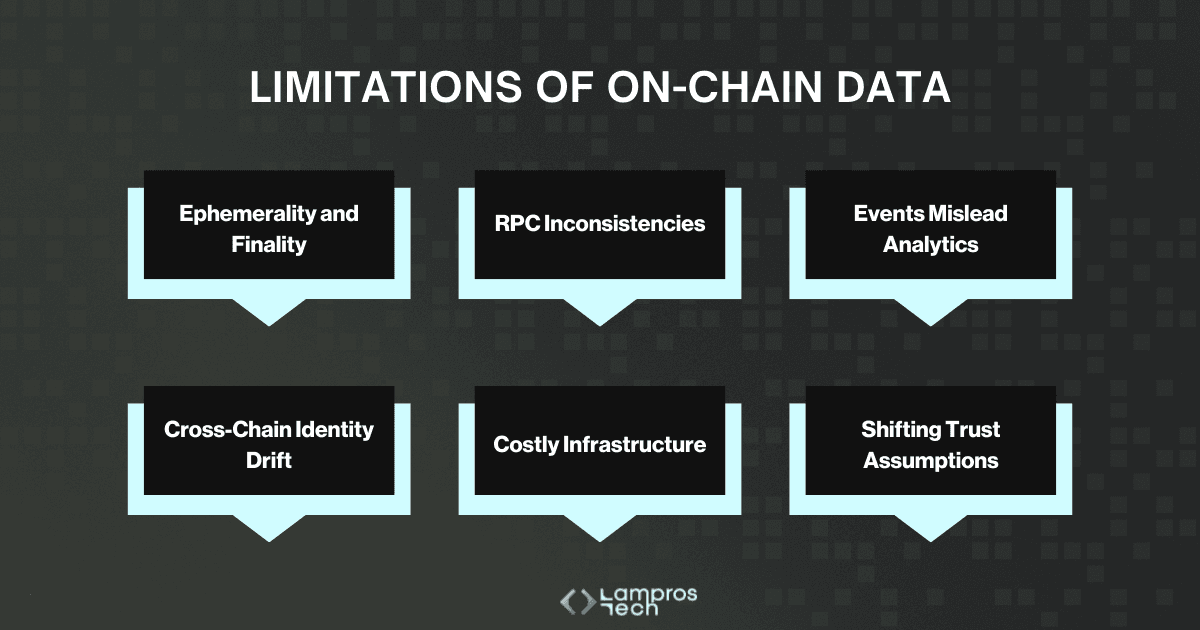Contact Us
If you're working on something real — let's talk.
Development & Integration
Blockchain Infrastructure & Tools
Ecosystem Growth & Support
© 2025 Lampros Tech. All Rights Reserved.
Published On Aug 28, 2025
Updated On Aug 28, 2025



Growth Lead
FAQs

On-chain data includes blocks, transactions, receipts, contract state, rollup proofs, data availability blobs, and cross-chain messages. Each carries different guarantees of permanence and verifiability.

As ecosystems expand across rollups, bridges, and DA layers, data gets pruned, RPCs disagree, events can be spoofed, and assets drift across chains. These create inconsistencies that undermine trust.

Teams risk misreported TVL, inflated liquidity, treasury losses, governance disputes, and undetected exploits when analytics pipelines assume raw on-chain data is always accurate.

By designing trust architecture: using multiple RPC sources, respecting finality, handling reorgs, encoding token behaviors, reconciling cross-chain assets, capturing blob data, and verifying metrics continuously.

Substreams, Subsquid, and Goldsky for deterministic ingestion; Celestia, EigenDA, and Avail for DA storage; EAS for attestations; IPFS/Arweave for content-addressing; and invariant checks for continuous verification.